The weekend of January 25 saw the 1,800 mostly lycra-clad racers hurl themselves down a Swiss mountain in search of glory, redemption and a hefty dose of one-upmanship. I spent the race day firstly careering down the course. Then after an extended pause for breath I watched the unfolding events with Walter Häsler, a 68-year-old member of the Murren Ski Club who was taking part in the race for the 37th time. Some would suggest that to take part in a race like the Inferno needs a temporary suspension of one’s faculties, but every year the applications easily outweigh the start numbers available.
This was the 71st time the event has been held and as ever it was filled with spills, extraordinary performances and personal triumphs. I was lucky enough to have an early-morning start time and, despite a minor crash which caused the still sleepy gate marshal to almost swallow his whistle, managed to survive and reach the finish intact.
As Walter showed me around the course, I asked him whether racing today’s Inferno is easier than it was when he first leapt out of the start gate in 1976.
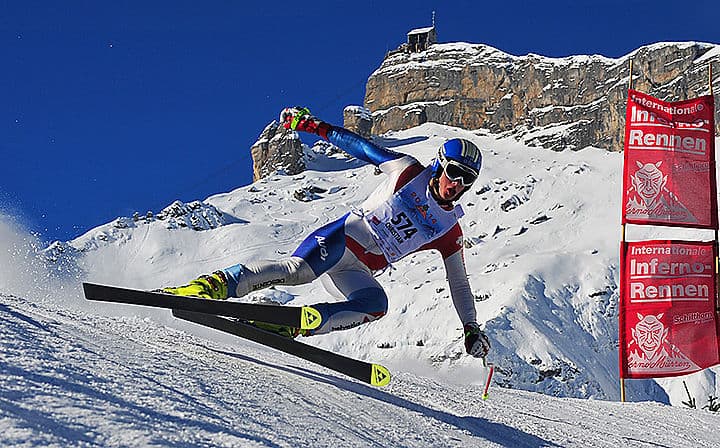
1. The Course
The Inferno was first organised in 1928 by a group of 16 privileged, but definitely adventurous, English men and women. The four women and 12 men simply made their own way from the top of the Schilthorn at 2970m down to the village of Lauterbrunnen on the valley floor at 795m. They’d had to climb up half the mountain on foot the day before, stay in a definitely less-than-cosy wooden hut and then ascend to the summit early the next morning before starting the descent all together at exactly midday.
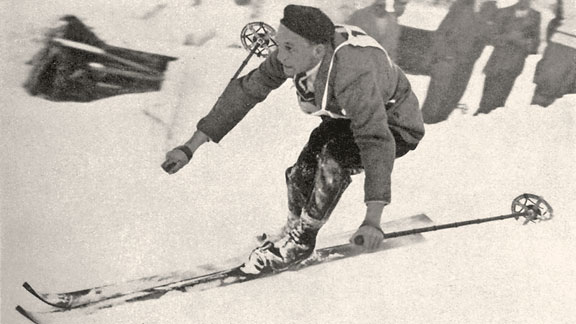
The first winner was Harold Mitchell. A year later, British Olympic racer Jimmy Riddell took half an hour off the time. According to the book Snow Crazy by Arnie Wilson, when Riddell got to the finishing tape in Lauterbrunnen there was no one there to greet him. He had to clomp his way into the nearest bar – skis still attached to his leather boots – to find a time-keeper.
Today’s course is a far cry from the early days when pistes didn’t even exist and you took whatever conditions came along. Whilst the track we raced was prepared to carpet-like smoothness, Walter pointed out that when he first entered the race the course started at a higher point (now considered too dangerous for ski racing), included some heavily mogulled sections and was sometimes covered in half a metre of fresh snow. Given the infamous uphill sections of the course that can tax the hardiest lungs of today, this doesn’t even bear thinking about. Definitely 1-0 to the old boys (and girls).
2. The Racers
Today’s Inferno racers take the event very seriously indeed with catsuits being the norm, the night before spent waxing skis, and endless practicing to ensure the fastest lines through the gates. In Walter’s early days in the late 1970s, the race was very different. There were half the number of entrants and things were more relaxed dress-code wise. Whilst it could be argued that catsuits are the antithesis of what’s cool to be seen in on the ski slopes, it appears that the hi-tech lycra and vastly improved skis, boots and bindings have helped ensure that the overall standard of the skiing has improved.
Safety has improved too, with all the danger points on the descent protected today. Apparently in Walter’s early races the general idea seemed to be that a couple of picket fences were enough to protect the racers from destruction as they flew through the infamous gunbarrel section known as the Kanonenroh. Let’s give a point to today’s version of the event to make it 1-1.
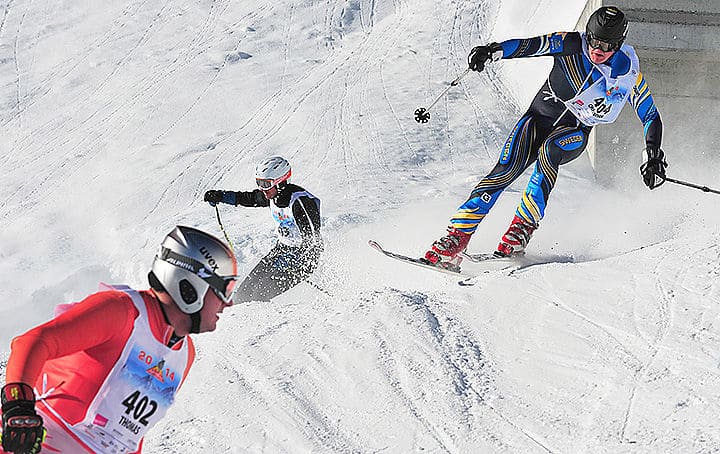
3. The Winning Times
The first winner made it down through all conditions imaginable in 1 hour 12 minutes. The fastest ever modern-day descent for the full course stands at 13 minutes 20 seconds. Considering the race is 14km long, with at least two not-to be-sniffed-at uphill sections, this shows that the top racers are screeching down the course at speeds in excess of 70mph. This may not seem that extraordinary compared to the racers of the current Winter Olympics and World Cup, but there is one major difference: the professionals flying down the Kitzbuhel Hahnenkamm or Wengen Lauberhorn have the course to themselves. In the Inferno racers start at 12 second intervals, leading to some terrifying Wacky-Races moments on the tricky sections. One more point for the modern-day version.
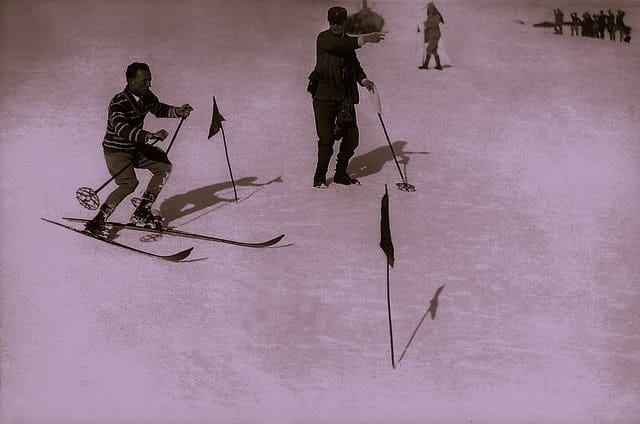
4. The Adventurers
There are many inspiring stories every time the Inferno race is run, and this year was no exception. In 2013, Les Fremder from Australia was carried off the Inferno racecourse with a broken neck, yet in 2014 he was back in his catsuit and made it down the entire course in grand style. Local Swiss hero, Albert ‘Bobs’ Feuz completed the race for the 50th time the day after his friend Franz Sonderegger died – Franz was due to race his 55th Inferno. Yet despite these modern-day heroics, I got the sense from Walter Häsler that the men and women who ran this ski race in the days-gone-by were the true pioneers. They often had no idea what the descent held for them, yet went for it all the same. Today’s race may be faster and safer, but I doubt that it’ll ever compare to that first perilous descent in 1928.











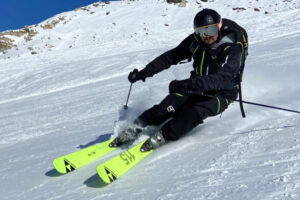

Not up for the Olympic Downhill? Try this instead: https://t.co/y5dnJdL5Qe
“@welove2ski: Not up for the Olympic Downhill? Try this instead: https://t.co/nKZbL405qn”
Not up for the Olympic Downhill? Try the Inferno instead #mürren #jungfrauregion https://t.co/WmEV9IaoML
Would you race a ski race called Inferno? https://t.co/toJ813ZBtr